About this mango pickle recipe
Mango Pickle, also known as Aam Ka Achaar in Hindi is a tangy and spicy Indian condiment made from raw mangoes, a blend of spices and mustard oil. This traditional pickle is a staple in Indian households, enhancing the flavor of various meals with its zesty kick.
Recipe highlights –
- Traditional North Indian style aam ka achar recipe
- Specifically from Punjab, Rajasthan & neighboring regions
- Beginner friendly; quick and effortless
- No sunlight required
- No heating of mustard oil
- No roasting of spices
- Recipe for 1 kg mangoes, easily scalable using the same ratio
In India most household prepare a whole year’s stock of mango pickle during the summer when raw mangoes are abundant. However, the preparation methods widely differs. I have shared my mom’s authentic mango pickle recipe, which is really simple and easy to make, even for someone who has never made pickle before.
Different varieties of mango pickles in India
In India, the recipe for making mango pickle differs from state to state. In fact many families have their own variation of making this pickle which is perfected over years and passed from one generation to another.
Each region in India has its unique way of preparing mango pickle, resulting in a wide variety of tastes and textures –
- The North Indian varieties of mango pickle are known for their bold flavors and often use ingredients like mustard oil, fennel seeds, nigella seeds, fenugreek seeds, and red chili powder. They are generally chunkier and oilier. This variety of achar is common in Punjab, Uttar Pradesh, and Rajasthan.
- South Indian mango pickles are more spicy & hot, often using ingredients like sesame oil, coconut oil, curry leaves, mustard seeds, red chili powder and asafoetida. They are more smoother and paste like. This type of mango pickles are popular in Andhra Pradesh, Tamil Nadu, Karnataka and Kerala.
- In western states like Gujarat and Maharashtra, jaggery or sugar is sometimes added resulting in a sweet and tangy aam ka achar.
- In eastern states like Bengal too, the pickle is typically sweet & sour and flavored with mustard oil and panch phoron.
Main ingredients for mango pickle
The following are the main ingredients used for making this mango pickle recipe –
- Raw mangoes – Use ripe and firm raw mangoes for the best texture and taste of mango pickle. Choose mangoes with a thin skin if possible.
- Pickling spices – Spices like nigella seeds, fennel seeds, methi dana fenugreek seeds, mustard seeds, cloves and red chilli powder provide the characteristic flavor to this mango pickle. The spices should be coarsely ground, rather than into a fine powder. Some people also like to roast the spices before grinding, however it is not necessary.
- Mustard oil – This not only adds a pungent flavor to the mango pickle, but also helps preserve it by preventing the growth of bacteria and fungi. The mustard oil is added without heating. However, if you find the taste of mustard oil too pungent, then you can heat it till it reaches smoking point and then cool it down completely before adding it to the pickle. However, this might lead to a slightly denser pickle.
How to store mango pickle properly?
Follow these tips to make and store mango pickle correctly, ensuring it stays fresh and delicious:
- Wash the mangoes thoroughly to remove any dirt. Then wipe and dry them completely.
- Press the mango pieces down in the oil to eliminate any air gaps. Ensure the oil level is at least 2 inches above the pickle, covering all the mango pieces to prevent spoilage. Add more oil if necessary.
- Store the mango pickle in a glass or ceramic jar, as these are non-reactive materials and help maintain the original taste. Avoid plastic jars, as they might react with the acidic ingredients and retain odors and stains.
- Ensure all utensils and jars used are completely clean and dry to prevent spoilage.
- Initially, keep the pickle at room temperature in a dry place. Shake the jar once or twice a day for the next 3-4 days until the pickle settles at the bottom with oil floating on top. The mangoes will be fully pickled in about 10 days.
- This recipe does not require sunlight. However, if the weather is very cold, you can place the jar in the sun for an hour.
- After the mango pickle is ready, store it in a cool, dry place. If the humidity is high, refrigerate the pickle.
- Always use a clean and dry spoon to scoop out the mango pickle. Never use a used or wet spoon to avoid contamination.
- Mango pickle can last up to a year if stored at room temperature and up to 2 years if refrigerated.
Serving suggestions
Mango pickle is served as a side dish along with food in most Indian households, adding a burst of flavor to any meal –
- My favorite way to eat mango pickle is with stuffed parathas like paneer paratha or gobi paratha.
- Fresh pooris served with hot aloo tamatar ki sabzi and aam ka achar are a match made in heaven.
- Another combination I really like is pairing this aam ka achar with a hot bowl of moong dal khichdi or vegetable dalia, along with a roasted papad. The pickle elevates even the simplest meal to the ultimate comfort food.
- You can pair the achar with rotis and any vegetable curry or dal.
- You can also serve it with plain rice, dal rice, curd rice or pulao.
- It can also be enjoyed with sandwiches or as a spread on toast for a spicy twist.
Frequently asked questions about mango pickle
Mustard oil is the best choice for making mango pickles due to its flavor, preservation qualities, and traditional usage. However, alternatives like sesame oil, olive oil, and vegetable oil can be used depending on personal preference.
The pickle is generally bitter at the start, however this reduces after 3-4 days as the pickle ferments. Bitter taste can also develop from adding too much fenugreek seeds or using stale spices. The only way to reduce this bitter taste is to sprinkle a few drops of lemon juice just before eating the aam ka achar.
Improper preparation and storage methods can lead to the mango pickle getting spoilt. To avoid fungus in mango pickle, ensure that there is no water added in the pickle, the jar and utensils are thoroughly cleaned, and the pickle is stored away from moisture. Always use a dry and clean spoon for taking out the pickle. Refrigerate the pickle after fermentation to increase its shelf life.
Signs of spoilage include an off smell, mold growth, or an unusual change in color. If the pickle smells rancid or has visible mold, it should be discarded.
Traditionally, mango pickles are made with unripe mangoes for their firmness and sour taste. Ripe mangoes may not hold up well during the pickling process and could result in a very different texture and flavor.
Health benefits
Mango pickle contains probiotics from the fermentation process, which are good for gut health and improve digestion. The inclusion of raw mangoes provides a good source of vitamin C, which boosts immunity and improves skin health.
Additionally, the spices used, such as turmeric and fenugreek, are rich in antioxidants that help reduce inflammation. However, due to its high salt and oil content, it is essential to enjoy mango pickle in moderation to avoid potential health issues related to excessive sodium and fat intake.
To make mango pickle or aam ka achar at home follow the detailed step by step recipe with pictures posted below.

Mango Pickle Recipe | Aam Ka Achar
Recipe Info
Nutrition
Ingredients For Mango Pickle Recipe | Aam Ka Achar
- 1 Kg Raw Mangoes approx. 5-6 mangoes
- 250 ml Mustard Oil (Sarson Ka Tel) approx. 1 cup
- 150 gm Salt approx. 1/2 cup
- 4-5 Teaspoons Red Chilli Powder
- 2 Teaspoon Turmeric Powder (Haldi)
- 2 Tablespoons Kalonji (Nigella Seeds)
- 3 Tablespoon Saunf (Fennel Seeds) coarsely ground
- 2 Tablespoons Fenugreek Seeds (Methi Dana) coarsely ground
- 3 Teaspoons Rai (Black Mustard Seeds) coarsely ground
- 3 Teaspoons Sarson Dana (Yellow Mustard Seeds) coarsely ground
- 2 Laung (Cloves) coarsely ground
- 1/2 Teaspoon Heeng (Asafoetida)
Step By Step Instructions for Mango Pickle Recipe | Aam Ka Achar
- Wash the raw mangoes and let the water dry. While selecting the mangoes, make sure to choose hard green ones. Wipe the mangoes with a clean cloth. Cut the raw mangoes into 8-10 medium sized pieces and remove the seeds. Put them in a large clean bowl. Take care not put any water in the pickle.1 Kg Raw Mangoes

- Add salt, red chilli powder, turmeric powder (haldi) and heeng (asafoetida). Coarsely grind fennel seeds, kalonji, methi dana, rai (brown mustard seeds), sarson dana (yellow mustard seeds) and laung (cloves) and add them to the mixture.150 gm Salt, 4-5 Teaspoons Red Chilli Powder, 2 Teaspoon Turmeric Powder (Haldi), 3 Tablespoon Saunf (Fennel Seeds), 2 Tablespoons Kalonji (Nigella Seeds), 2 Tablespoons Fenugreek Seeds (Methi Dana), 1/2 Teaspoon Heeng (Asafoetida), 3 Teaspoons Rai (Black Mustard Seeds), 3 Teaspoons Sarson Dana (Yellow Mustard Seeds), 2 Laung (Cloves)

- Mix all the dry ingredients in the pickle using a spatula or spoon. Do not use your hand for mixing.

- Add the mustard oil and mix everything well with the spices. The oil can be added raw in the pickle. If you want to reduce the flavor of the mustard oil, you can first heat the oil and then let it cool completely before adding. However this might lead to a slightly viscous pickle.250 ml Mustard Oil (Sarson Ka Tel)

- Transfer the mixture to a clean and dry jar. Store it in a dry place. You should shake the jar once or twice a day for the next 3-4 days. After around 4 days the pickle will reduce and go to the bottom of the jar. The oil will start floating on the top. If the oil is less and does not cover the pickle completely then you can add 1-2 tablespoons of mustard oil to it.

- Store the jar in a dry place at room temperature. The mangoes will become soft in 8-10 days and the pickle will be ready. You can refrigerate the pickle after 10-15 days if there is humidity where you live. Otherwise you can leave it outside as well.
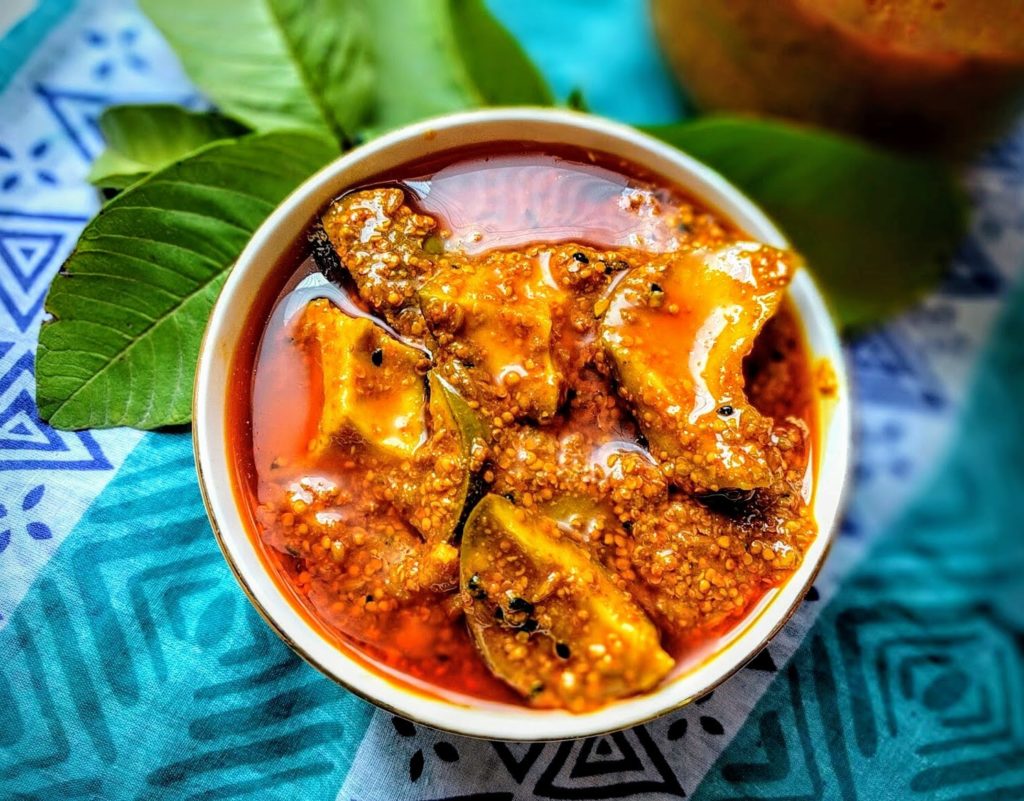
Before You Go...
Don't forget to Pin this post to save it for later. You can also Subscribe to our mailing list or follow us on Facebook, Pinterest, Instagram or Twitter to see more delicious food recipes.
We'd love to know your thoughts about this dish! Please leave a comment or share a picture on Facebook or Instagram with the hashtag #vegecravings.


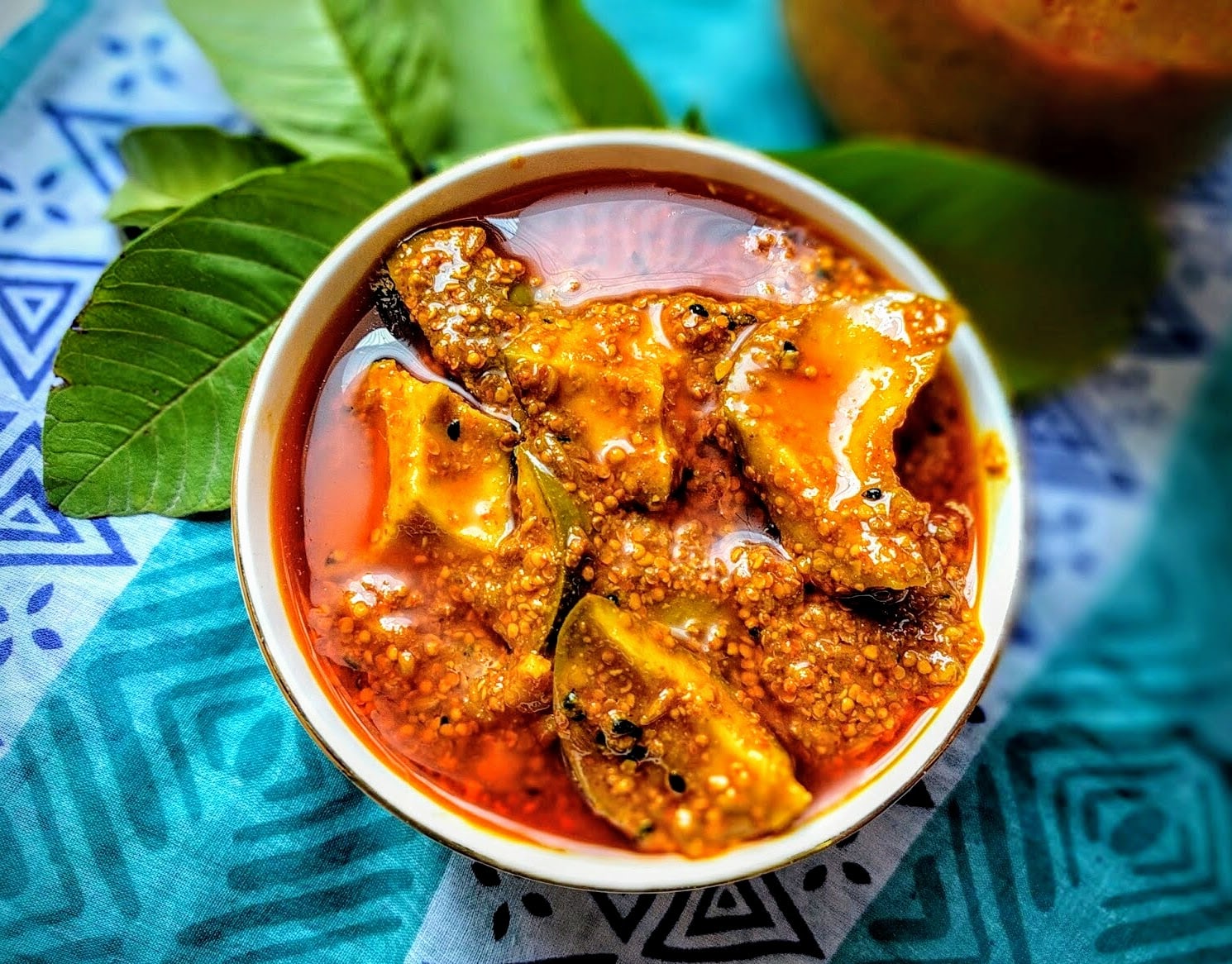
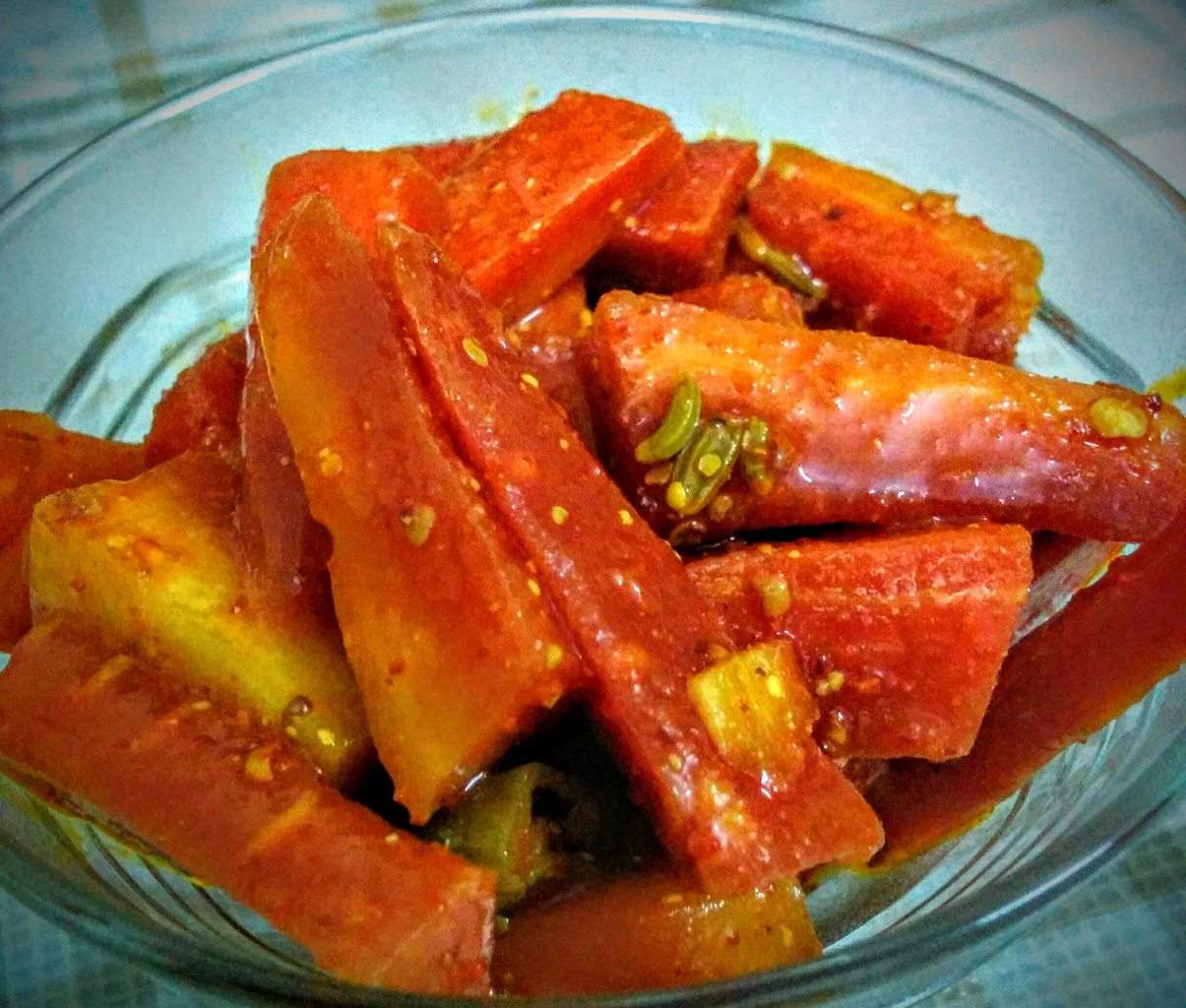
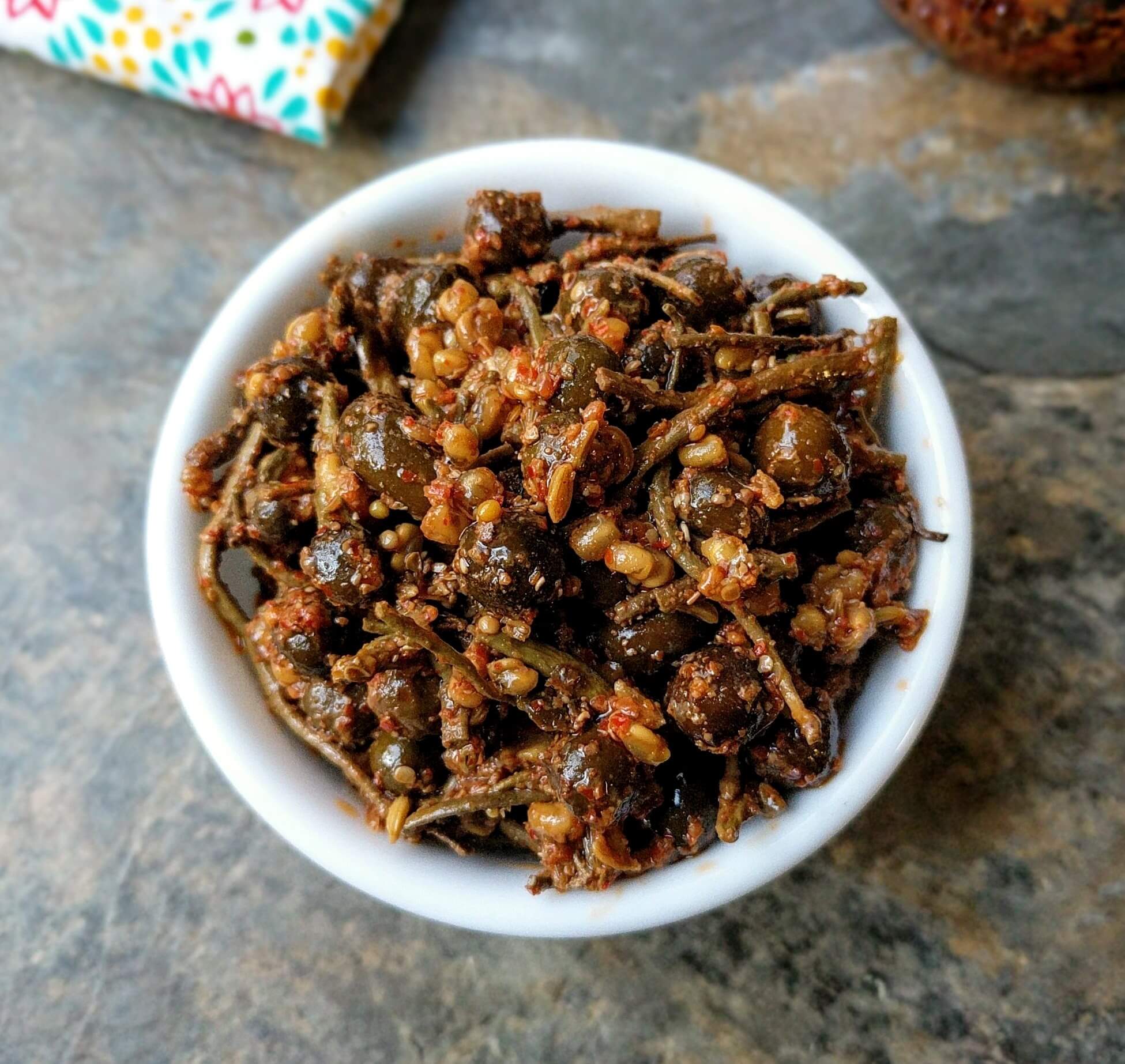
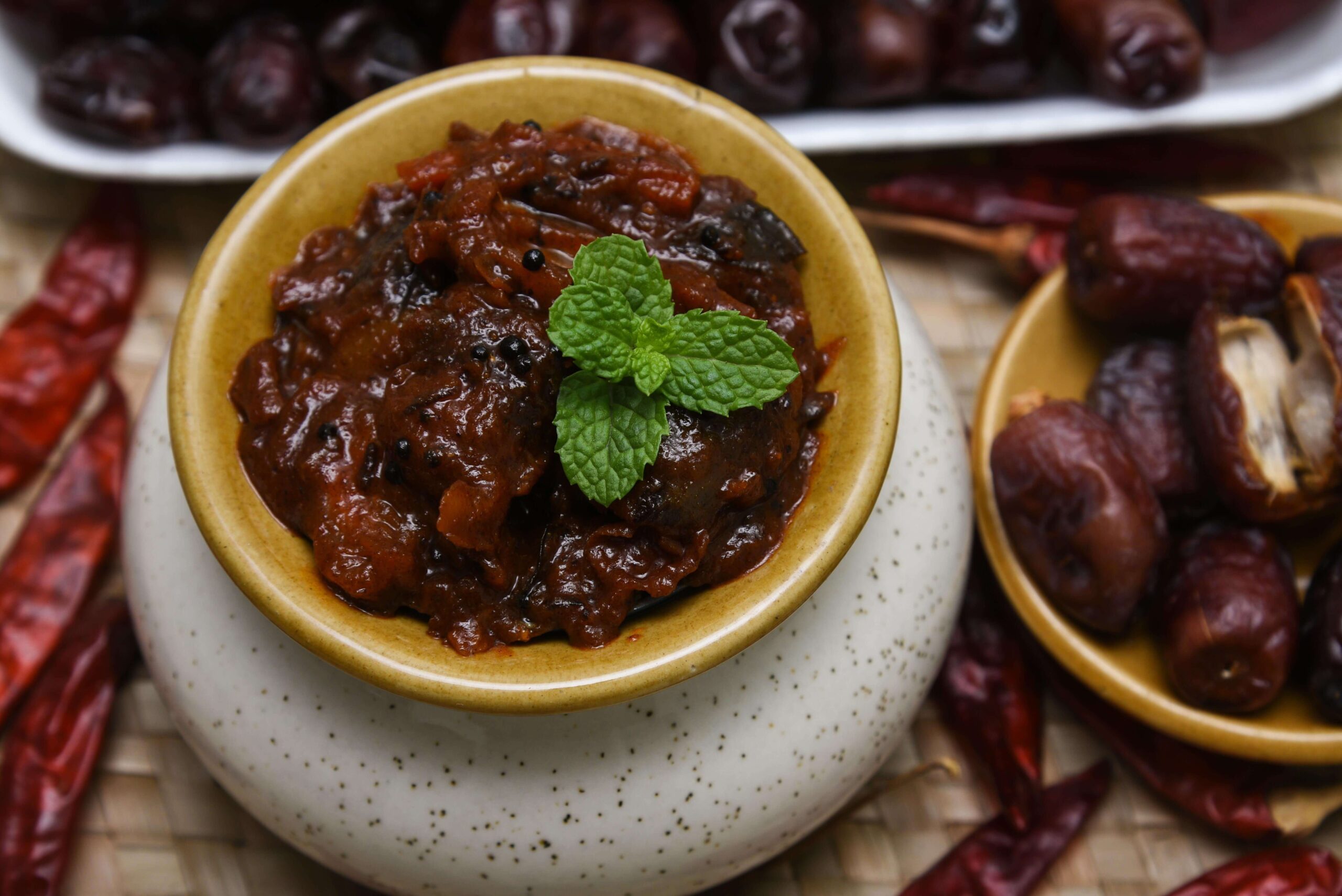
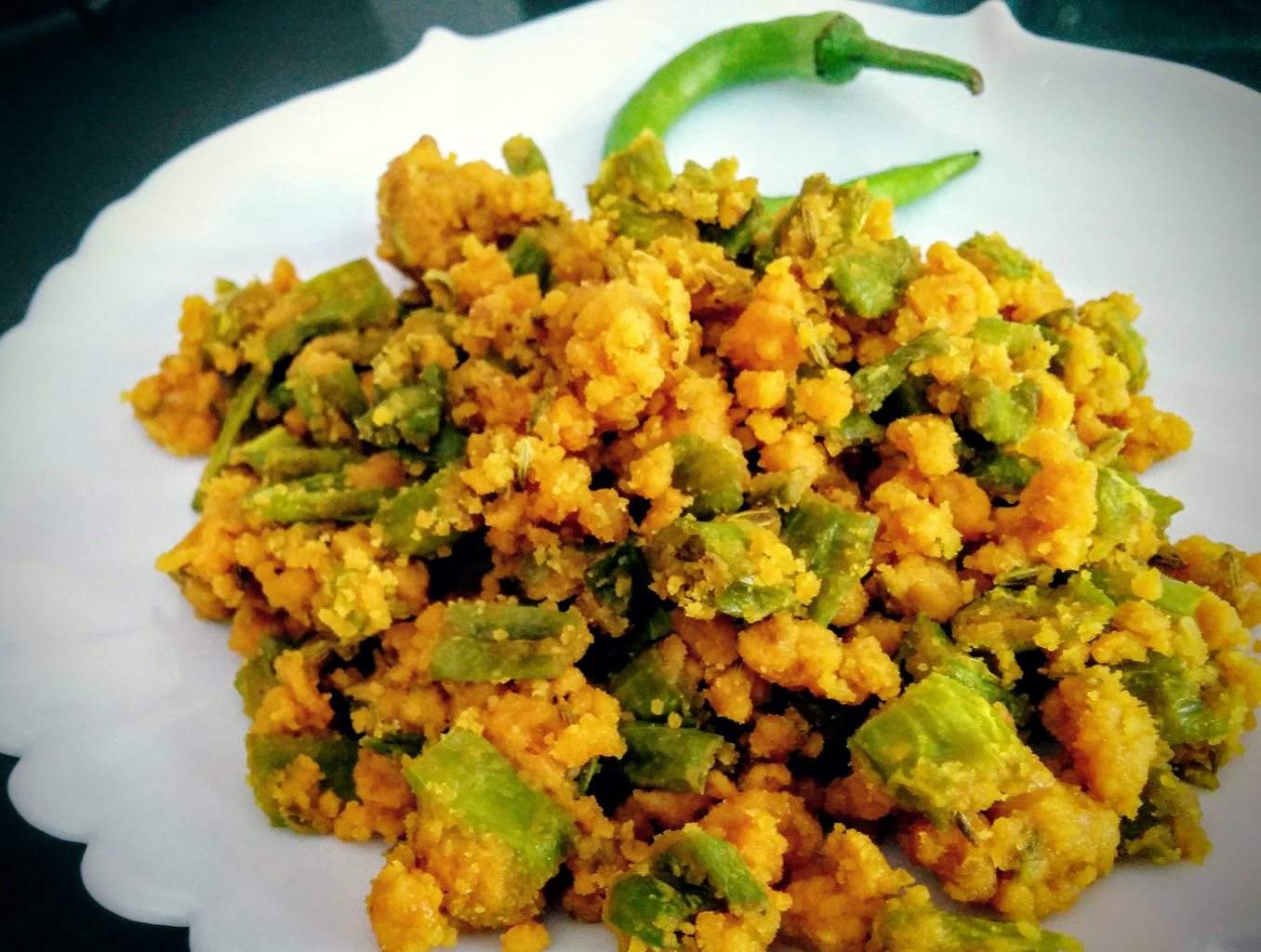
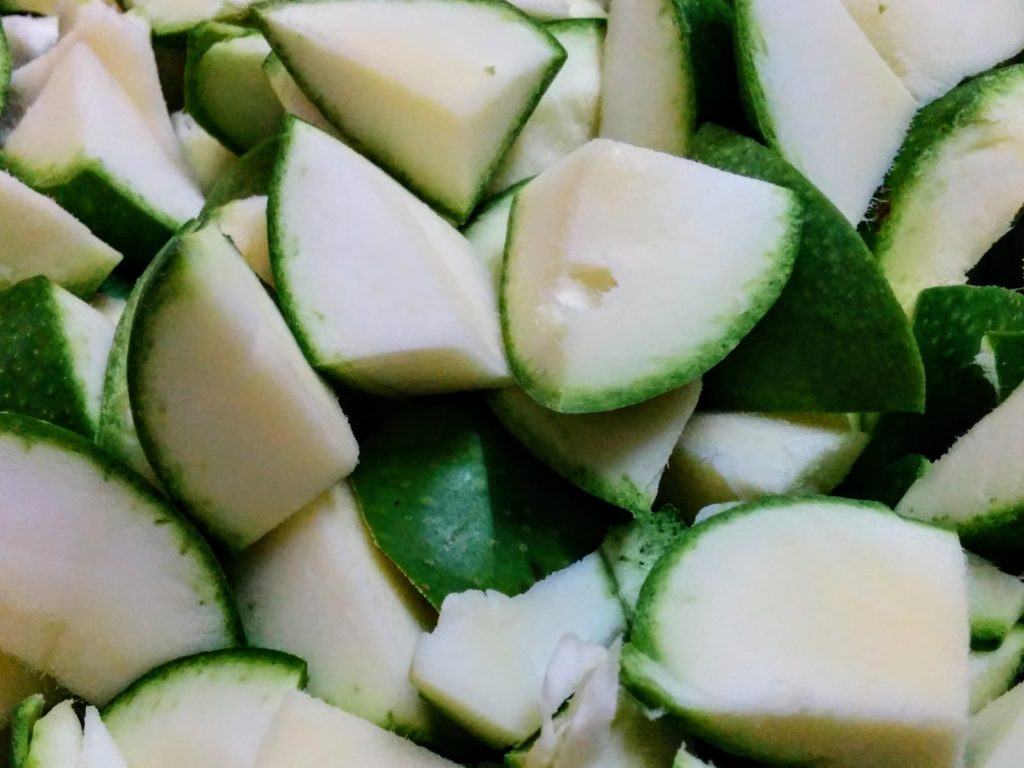
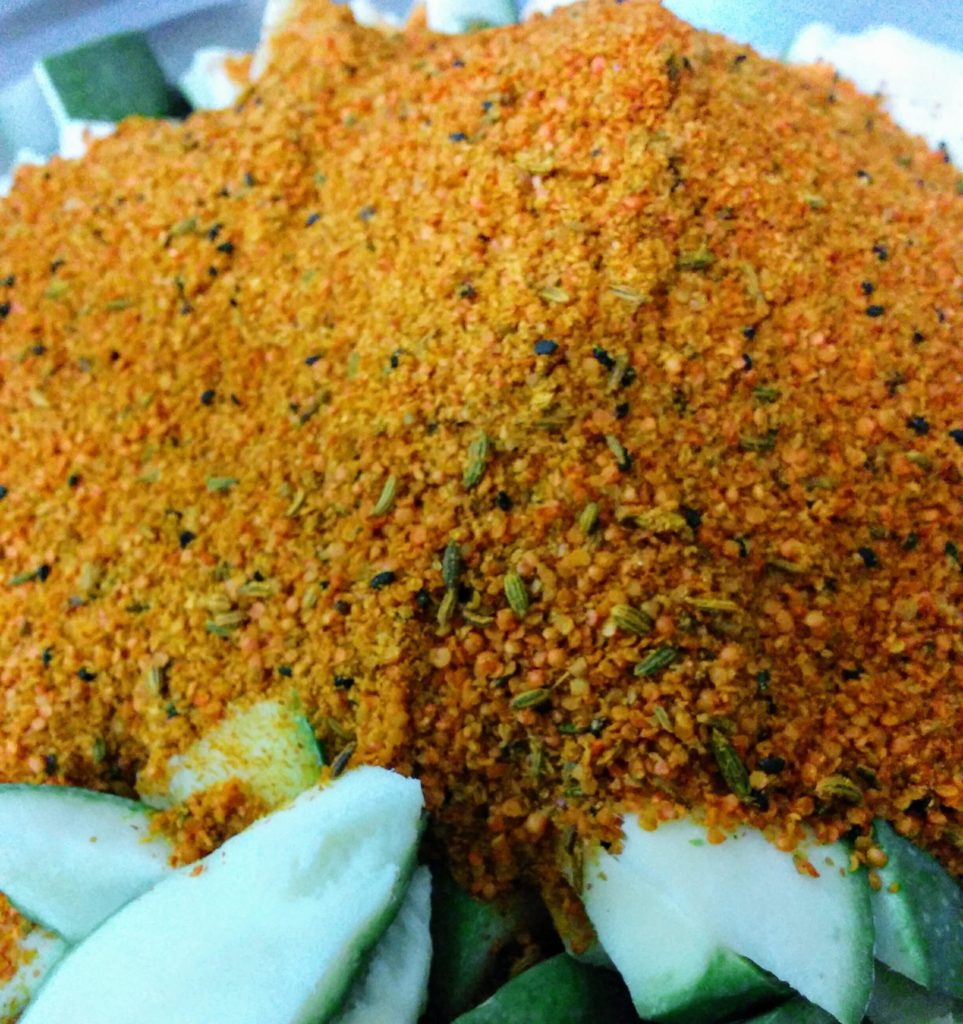
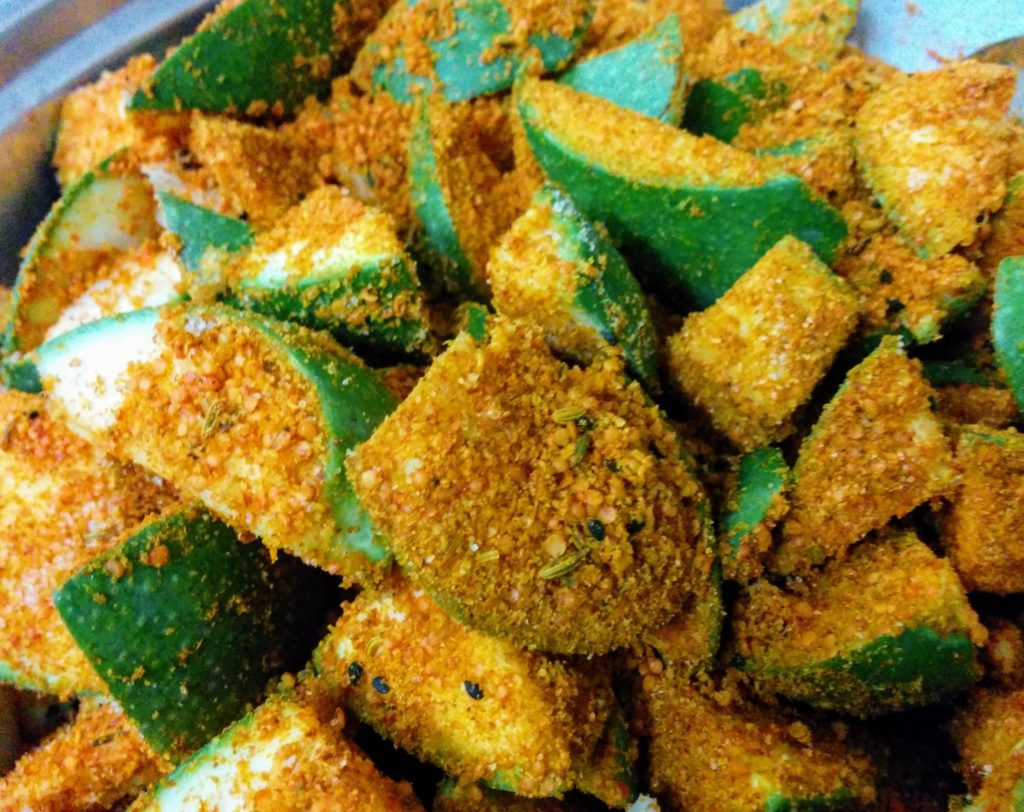


Really very simple way you described the recipe of this pickle.
Let me know how it turned out Shabana 🙂
I think 200 gms salt will be too much
Hey Neerja, you can reduce the quantity a bit if you like, use 150gm for 1kg mango pickle for less salt.